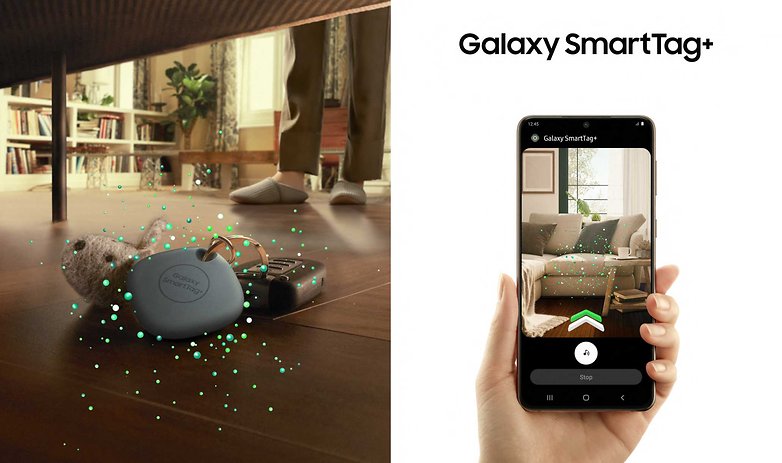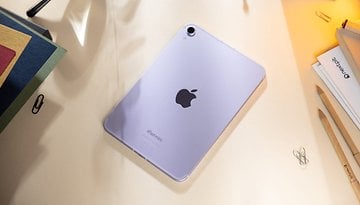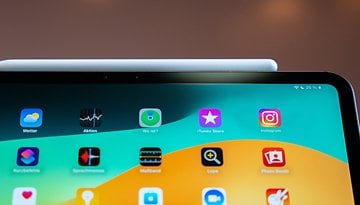What is UWB? See How this Technology Can Improve your Everyday Life


After making headlines by powering Apple AirTag trackers, UWB technology has the potential to change the way we use some devices in the long run, and such changes will not be limited to only smartphones but also everyday objects. But do you know how the Ultra-Wideband works? Fin out in this article.
What is UWB?
UWB is an acronym that stands for Ultra-Wideband technology. It's a radio transmission standard that functions not only in the realm of data communication but also for location detection and access control.
UWB differs from standards such as Wi-Fi and Bluetooth as it occupies a very wide frequency width of 500 MHz, in a spectrum that (depending on the region) ranges from 3.1 GHz to 10.6 GHz, and has been specially designed to suffer from (and cause) less interference with other wireless communication standards.
The current standard may be confused with the specifications being developed by the "late" WiMedia Alliance - and its Wireless USB specification, which was mainly thought to be used for data transfer while occupying the very same frequency band that was inherited by UWB.

Like other technologies, the system we now call UWB is defined by a consortium of companies, FiRa, where some of the luminaries include Apple, Bosch, NXP, Qorvo, Qualcomm, Samsung, and Thales, among others.
Why is UWB so important?
Unlike the other wireless data transmission technologies mentioned earlier, UWB can be used to determine the distance between devices down to an accuracy of a few centimeters. On the other hand, its data speed is limited to "a few tens of Mbps".
According to the FiRa Consortium, the standard has a theoretical range of up to 200 meters under ideal conditions. In reality, using an AirTag in the presence of walls and other obstacles would naturally result in a much shorter detectable range.
UWB relies on short (2 nanosecond) wave pulses and the Time of Flight (ToF) technique in order to determine the distance between compatible devices. With ToF, the initiating device estimates the distance to the second device based on its response time.
In addition, the system allows real-time tracking of the relative movement and position between the two objects that is accurate down to the centimeter.

Which products will we see UWB feature in?
In addition to locating objects, which is a feature that is not only used in the Apple AirTags but also in some versions of its rival Samsung SmartTag+, UWB also sees action in the likes of the HomePod Mini speaker, where it boasts an enhanced version of the Handoff feature that will continue audio playback from the smartphone on the speaker.
In the case of the HomePod Mini, when you bring a compatible iPhone close to the smart speaker, the smartphone will begin vibrating, where the vibration will increase in intensity the closer it gets. At the same time, lighting on the HomePod experiences a variation in a similar manner.
Other suggested uses for the technology when it comes to personal use will heavily revolve around home automation. For example, controlling the lighting in rooms based on a person's location, turning lights on and off when entering and leaving rooms, or access control on doors, among others.

Samsung also cited that on UWB-compatible devices, the Nearby Share option automatically lists other UWB devices first by simply pointing the smartphone in its direction.
Another potential use would be in games, especially those involving augmented reality. Multiplayer games can also benefit by simplifying the process of hunting down opponents, without having to activate the device's GPS.
Outside the home, UWB support does seem promising in the effort to replace car keys, where it is touted to be a mid-range version of NFC. There were announcements this year from BMW who is in partnership with Samsung, where at Google I/O concerning Android, the necessary APIs were being integrated into the OS source code.
In the case of vehicles, this technology could not only unlock the vehicle's doors, but also help locate it in a parking lot by offering visual, audible, or haptic instructions as in the case of the HomePod Mini. Similar ideas can also be applied to car-sharing services or perhaps simplifying the unlocking of bicycles.
In theory, it is even possible to combine some of these applications, for instance, in a compact car equipped with UWB technology, by detecting the object locators associated with more than one suitcase approaching with the owner. Upon detection, the driver's door will unlock with the trunk opening, while the seats collapse automatically to make room for the luggage.
NXP is the manufacturer of UWB as well as NFC chipsets, and the company demonstrated the technology in partnership with VW, in a car that automated the attachment of a trailer, including detecting the correct installation of a child seat, while deactivating the airbag if necessary.

UWB could also have interesting applications when visiting places for the first time, with the potential to help to get around your environment or even simplifying the operation of interactive guides in museums.
Not to be just optimistic, this technology could also be used for personalizing ads and monitoring presence in stores, at least according to the FiRa consortium.
Is UWB secure?
In addition to the use of encryption in data transmission, UWB's security also relies on the use of the ToF technique itself. By estimating the distance based on response time rather than signal strength (an option in Bluetooth and some Wi-Fi-based services), the technology avoids the risk of man-in-the-middle (MITM) attacks, such as those that rely on signal amplification to fool the device.
UWB-enabled handsets and smartphones
At the time of writing, the UWB system can be found on the following smartphones:
- Apple iPhone 11
- Apple iPhone 11 Pro
- Apple iPhone 11 Pro Max
- Apple iPhone 12
- Apple iPhone 12 mini
- Apple iPhone 12 Pro
- Apple iPhone 12 Pro Max
- Apple iPhone 13
- Apple iPhone 13 mini
- Apple iPhone 13 Pro
- Apple iPhone 13 Pro Max
- Apple iPhone 14
- Apple iPhone 14 Plus
- Apple iPhone 14 Pro
- Apple iPhone 14 Pro Max
- Samsung Galaxy Note 20 Ultra
- Samsung Galaxy S21+
- Samsung Galaxy S21 Ultra
- Samsung Galaxy S22+
- Samsung Galaxy S22 Ultra
- Samsung Galaxy S23+
- Samsung Galaxy S23 Ultra
- Samsung Galaxy Z Fold 2
- Samsung Galaxy Z Fold 3
- Samsung Galaxy Z Fold 4
Among the devices compatible with the technology, we can cite as examples:
- Apple AirTag
- Apple HomePod mini
- AppleWatch Series 6
- Samsung SmartTag+
Apparently, the next generation Google Pixel should also include this technology. Other companies that are part of the FiRa consortium are Sony, Xiaomi, Motorola, Oppo, and Chinese manufacturer Vivo. In addition to these smartphone brands, companies like Hyundai, ST-Electronics, and Tile, the tracker maker, are also part of the group.
Xiaomi doesn't want to be left out and has demonstrated the use of UWB in its ecosystem
Conclusion: Keep UWB on the radar
The consortium claims that in theory, the cost of producing UWB chips is not that far different from components used for Bluetooth connectivity, except for economies of scale in manufacturing. Nevertheless, the fact that the technology wasn't included in the base Galaxy S21 model doesn't inspire much confidence in the system's rapid popularization.
The inclusion of the necessary APIs in the Android system and adoption by more companies is going to be crucial in the broad adoption of the new standard. Personally, I believe it should follow in the footsteps of the NFC system, which is not even present across the board for mid-range phones.
Even so, UWB offers a practical potential that goes beyond what NFC delivers, and the examples cited are just the tip of the iceberg when it comes to the technology's capability, even if it will take some time to mature.
Source: FiRa Consortium, NXP




















Will it be localized to the device? Or will it be talking back to a centralized server? It sounds like its server driven.
At that point, privacy is over. They'll have a detailed view of your movement, your surroundings and build a database of devices/brands to add to your marketing profile.
It sounds like invasion masked as a "tool". It will be something I disable. If I can't disable it, that device is out of consideration.
Open hardware can't get here fast enough.